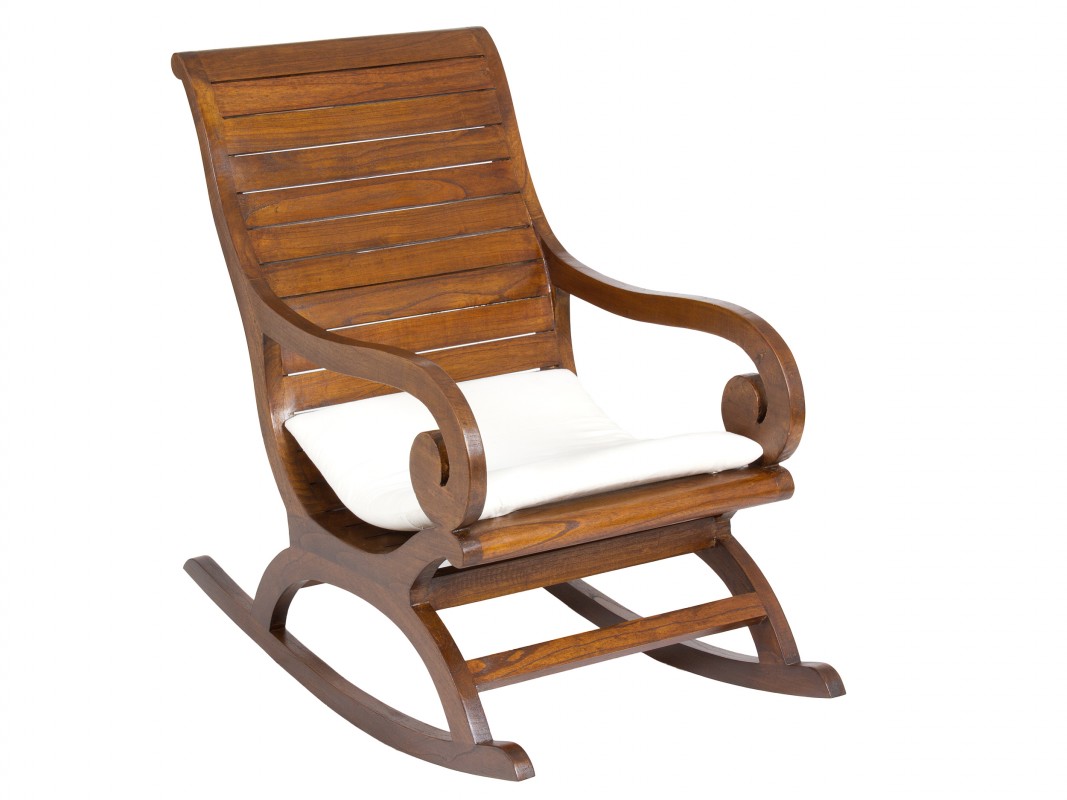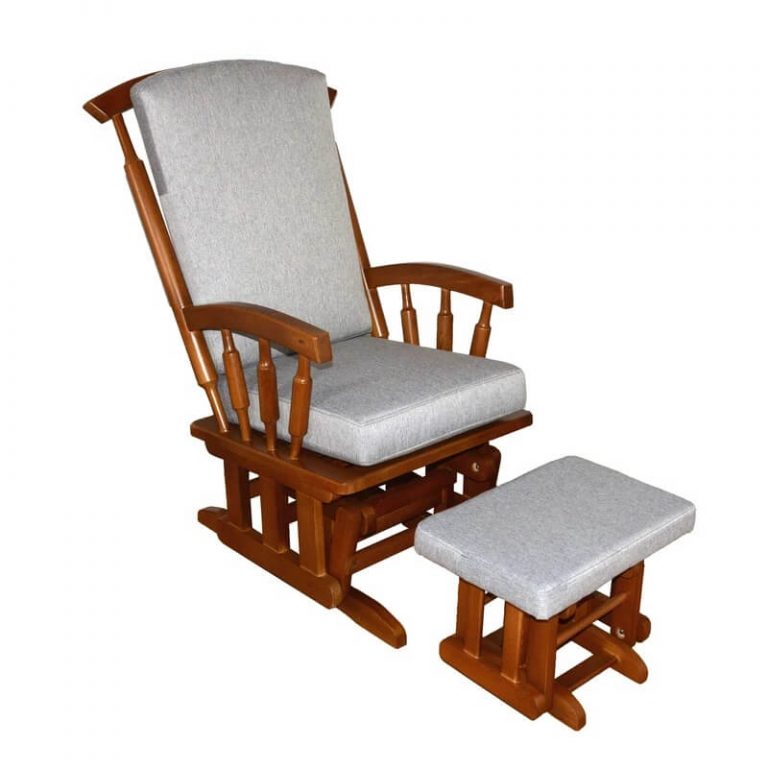The Rocking Chair in Spanish Culture

While rocking chairs are often associated with American culture, they also hold a significant place in Spanish history and tradition. They have evolved from symbols of status and relaxation to everyday furniture pieces, reflecting the changing dynamics of Spanish society.
Historical Significance of Rocking Chairs in Spain, Rocking chair in spanish
Rocking chairs were introduced to Spain during the colonial era, primarily through trade routes with the Americas. They were initially considered a luxury item, owned by wealthy families and used for relaxation and contemplation. The rocking motion was seen as a symbol of comfort and tranquility, often associated with the upper classes. Over time, rocking chairs became more accessible to the general population, especially as they were embraced by artisans and craftsmen who used them while working.
Rocking Chairs in Modern Spanish Homes and Communities
In contemporary Spain, rocking chairs are a common sight in homes, particularly in rural areas and villages. They are often placed on patios or balconies, providing a comfortable spot to enjoy the outdoors. In urban settings, rocking chairs are used for relaxation, reading, or simply enjoying a quiet moment. While not as prevalent as in the past, rocking chairs remain a cherished piece of furniture, symbolizing comfort, tradition, and a connection to the past.
Traditional Spanish Rocking Chair Designs
Traditional Spanish rocking chairs often feature intricate carvings and decorative elements. They are typically made from sturdy wood, such as oak or walnut, and are often finished with a dark stain or varnish. Some rocking chairs may incorporate woven cane or wicker seats, adding to their comfort and aesthetic appeal.
- Silla Mecedora: This classic rocking chair design is characterized by its high back, wide arms, and sturdy construction. It is often found in traditional Spanish homes and is known for its comfort and durability.
- Silla de Anea: These rocking chairs feature woven cane or wicker seats and backs, providing a cool and comfortable seating experience. They are often used in outdoor settings, such as patios or balconies.
Comparison of Rocking Chair Usage in Spain versus Other Latin American Countries
Rocking chairs are a popular piece of furniture in many Latin American countries, including Mexico, Argentina, and Chile. However, their usage and cultural significance may differ from Spain. In some countries, rocking chairs are associated with specific regions or social classes, while in others they are more ubiquitous.
- Mexico: Rocking chairs are a common sight in rural Mexican communities, where they are used for relaxation and socializing. They are often placed on porches or patios, providing a comfortable spot to enjoy the outdoors.
- Argentina: In Argentina, rocking chairs are often associated with the gaucho culture, a traditional way of life that emphasizes horseback riding and rural living. They are used for relaxation and contemplation, often in settings that evoke the gaucho lifestyle.
Rocking Chairs in Spanish Literature and Art

The rocking chair, a symbol of tranquility and contemplation, has found its way into the fabric of Spanish culture, appearing not only in homes but also in the works of renowned Spanish artists and writers. This section delves into the captivating presence of rocking chairs in Spanish literature and art, exploring how they are portrayed and the symbolism they convey.
Rocking Chairs in Spanish Literature
The rocking chair’s appearance in Spanish literature, while not as frequent as in American or British literature, is nonetheless significant. It often symbolizes a contemplative state, a space for introspection, or a connection to the past.
- In Federico García Lorca’s “Yerma” (1934), the rocking chair is used to highlight the character of Yerma’s mother. Yerma’s mother, unable to bear children herself, sits in a rocking chair, symbolizing her isolation and the weight of her inability to fulfill the traditional role of motherhood. This rocking chair, while seemingly a symbol of domesticity, becomes a symbol of yearning and unfulfilled desires.
- Carmen Laforet’s novel, “Nada” (1945), portrays a rocking chair as a symbol of nostalgia and a connection to the past. The protagonist, Andrea, recalls her childhood memories while sitting in a rocking chair, emphasizing the importance of family and tradition.
- In Gabriel García Márquez’s “One Hundred Years of Solitude” (1967), the rocking chair appears as a symbol of the cyclical nature of life and the weight of history. The character of José Arcadio Buendía often sits in a rocking chair, reflecting on his life and the legacy of his family.
Rocking Chairs in Spanish Painting and Sculpture
The rocking chair has also found its way into the realm of Spanish visual arts. While not as prevalent as other forms of furniture, its appearance in paintings and sculptures offers insights into the lives of the people and the social contexts of the time.
- The Rocking Chair is depicted in the painting “The Family of Charles IV” by Francisco Goya (1800). While not the central focus of the painting, the rocking chair in the background, occupied by a figure, represents a sense of domesticity and family life.
- In Salvador Dalí’s “The Persistence of Memory” (1931), the melting clocks and distorted landscapes are juxtaposed with a seemingly ordinary rocking chair. This juxtaposition of the surreal and the mundane challenges viewers to consider the nature of time and perception.
Symbolism of Rocking Chairs in Spanish Art and Literature
The rocking chair in Spanish art and literature often symbolizes:
- Contemplation and Introspection: The gentle back-and-forth motion of the rocking chair encourages a state of contemplation and reflection. This is seen in works like “Yerma” by Federico García Lorca and “Nada” by Carmen Laforet, where the rocking chair becomes a space for the characters to delve into their thoughts and emotions.
- Nostalgia and Connection to the Past: The rocking chair is often associated with childhood memories and the comforting familiarity of the past. This is evident in Carmen Laforet’s “Nada,” where the rocking chair serves as a reminder of Andrea’s childhood and her family’s history.
- Domesticity and Family Life: The rocking chair, especially in paintings like “The Family of Charles IV,” symbolizes the home and the importance of family relationships.
- The Weight of History and the Cyclical Nature of Life: In works like Gabriel García Márquez’s “One Hundred Years of Solitude,” the rocking chair embodies the cyclical nature of life and the enduring impact of history.
Notable Spanish Artists and Writers Who Have Incorporated Rocking Chairs Into Their Work
| Artist/Writer | Work | Year | Symbolism |
|---|---|---|---|
| Federico García Lorca | “Yerma” | 1934 | Contemplation, isolation, unfulfilled desires |
| Carmen Laforet | “Nada” | 1945 | Nostalgia, connection to the past, family |
| Gabriel García Márquez | “One Hundred Years of Solitude” | 1967 | Cyclical nature of life, weight of history |
| Francisco Goya | “The Family of Charles IV” | 1800 | Domesticity, family life |
| Salvador Dalí | “The Persistence of Memory” | 1931 | Time, perception, the surreal |
The Language of Rocking Chairs in Spanish

The Spanish language, rich in its nuances and cultural expressions, offers a fascinating perspective on the rocking chair, a piece of furniture that transcends borders and evokes feelings of comfort and nostalgia.
The Spanish Word for “Rocking Chair”
The most common Spanish term for “rocking chair” is “mecedora.” This word has a fascinating etymology, stemming from the verb “mecer,” which means “to rock” or “to sway.” This connection to movement highlights the essential characteristic of the rocking chair – its gentle back-and-forth motion.
Idioms and Proverbs
The Spanish language uses the word “mecedora” in several idioms and proverbs, showcasing its cultural significance.
“Estar en la mecedora”
This idiom literally translates to “to be in the rocking chair,” but it figuratively means “to be relaxed and at ease.”
“No hay mecedora que aguante a todos”
This proverb translates to “There’s no rocking chair that can withstand everyone,” signifying that not everyone can be pleased or accommodated.
Types of Rocking Chairs
The Spanish language distinguishes between different types of rocking chairs, reflecting a nuanced understanding of their design and use.
- “Silla mecedora” is a general term for a rocking chair, while “mecedora de madera” specifically refers to a rocking chair made of wood.
- “Mecedora de mimbre” refers to a rocking chair made of wicker, often associated with a rustic and cozy ambiance.
- “Mecedora de metal” refers to a rocking chair made of metal, often characterized by its modern and sleek design.
Dialogue Featuring a Rocking Chair
Rocking chair in spanish –
The following dialogue showcases the use of the word “mecedora” in a casual conversation:
“Abuela, ¿puedo sentarme en tu mecedora?” (Grandmother, can I sit in your rocking chair?)
“Claro, mi querida. Siéntate y disfruta del movimiento.” (Of course, my dear. Sit down and enjoy the movement.)
“Me encanta el sonido que hace la mecedora.” (I love the sound the rocking chair makes.)
“Sí, es muy relajante. Te hace sentir como si estuvieras en un barco en el mar.” (Yes, it’s very relaxing. It makes you feel like you’re on a boat at sea.)
The Spanish term for rocking chair, “mecedora,” evokes a sense of gentle movement and tranquility. While a mecedora provides a soothing back-and-forth motion, a more advanced form of relaxation can be found in the gintell massage chair malaysia. This innovative technology offers a comprehensive massage experience, mimicking the soothing motion of a rocking chair while incorporating targeted pressure and heat therapy.
Both the mecedora and the Ginteel massage chair cater to the human need for relaxation and comfort, each offering a unique approach to achieving a state of well-being.
The term “rocking chair” translates to “mecedora” in Spanish, a word that evokes images of gentle swaying and relaxation. While most rocking chairs are designed for individual comfort, one particular example stands out: the world’s largest rocking chair , a colossal structure that dwarfs even the most imposing of its counterparts.
This massive chair, a testament to human ingenuity and a symbol of the enduring appeal of rocking motion, serves as a reminder that the simple act of rocking can be scaled to extraordinary proportions.